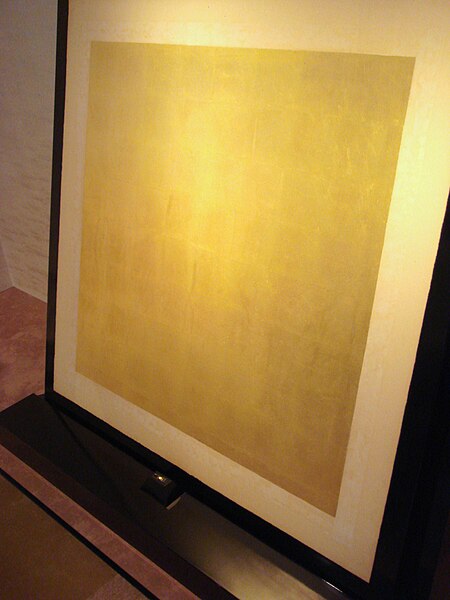Gold ground or gold-ground (adjective) is a term in art history for a style of images with all or most of the background in a solid gold colour. Historically, real gold leaf has normally been used, giving a luxurious appearance. The style has been used in several periods and places, but is especially associated with Byzantine and medieval art in mosaic, illuminated manuscripts and panel paintings, where it was for many centuries the dominant style for some types of images, such as icons. For three-dimensional objects, the term is gilded or gold-plated.
Crucifixion by Orcagna, c. 1365, with very elaborate tooling. Fragments from an altarpiece, in a 19th-century rearrangement.
Christ and archangels mosaic, Sant'Apollinare Nuovo, Ravenna, 7th-century with later restoration
The Wilton Diptych; c. 1395–1399; each panel is 53 x 37 cm.
Both panels are tooled, with different patterns.
Gold leaf is gold that has been hammered into thin sheets by a process known as goldbeating, for use in gilding.
A gold nugget of 5 mm (0.2 in) in diameter (bottom) can be expanded through hammering into a gold foil of about 0.5 m2 (5.4 sq ft). Toi gold mine museum, Japan.
Mycenaean necklace; 1400–1050 BC; gilded terracotta; diameter of the rosettes: 2.7 cm, with variations of circa 0.1 cm, length of the pendant 3.7 cm; Metropolitan Museum of Art (New York City)
An engraving showing the goldbeating process, 1698
22k gold leaf applied with an ox hair brush during the process of gilding








